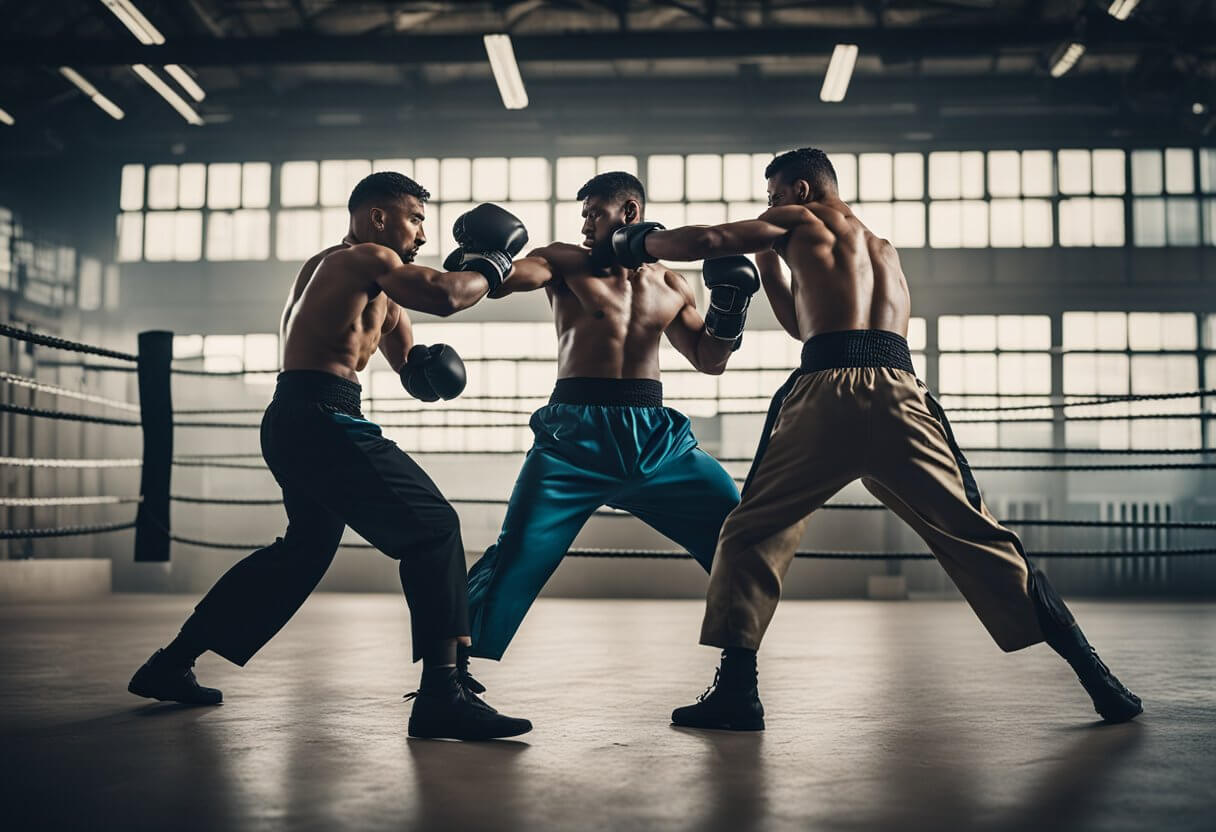
In the realm of film and television, the role of a stunt performer is as critical as it is exhilarating.
As an aspiring stunt performer, The Importance of Stunt Training a diverse set of physical skills is paramount to your success.
These skills are not just for show; they are essential for ensuring your safety and the credibility of the scenes you bring to life. From high falls to hand-to-hand combat for fight choreo, you must be adept at a range of stunts to be versatile and employable in the competitive entertainment industry.
Embarking on a career as a stunt performer involves more than just physical prowess; understanding the business side is also key.
Education in safety protocols, networking, and ongoing skill development are fundamental to not only maintain but also advance your career.
On top of that, as the industry evolves, staying informed through research and adapting to new tech and methods will be a game changer.
Dive into stunt training with a commitment to constant learning and a proactive approach to career management.
Key Takeaways
- Thorough training is essential for developing the varied skills needed for a stunt performer’s safety and success.
- Knowledge in the business aspects of stunt performing can aid in career longevity and progression.
- Continuous education and adaptation to industry changes are crucial for an aspiring stunt performer’s professional development.
The Path to Becoming a Stunt Performer

Embarking on the journey to becoming a stunt performer involves a combination of physical preparation, specialized training, and the continuous development of a wide range of skills. This career demands not only a high level of physical fitness but also an understanding of safety protocols and the ability to carry out complex movements with precision.
Educational and Training Foundations
Before you dive into the world of stunts, it’s crucial to build foundational training in disciplines such as gymnastics, martial arts, and parkour. These disciplines form the core of stunt professionals’ physical toolkit, offering a breadth of movement skills that are adaptable to various stunt scenarios. In addition to physical abilities, your education should include learning safety protocols to ensure that every stunt is executed with the utmost care to prevent injury.
Beginner’s Guide to Stunt Training Classes
For beginners, enrolling in stunt training classes at a reputable stunt school can provide structured guidance and hands-on experience. These classes often start with teaching basic techniques and then progressively introduce more complex stunts. As part of your training, focus on enhancing your physical fitness to meet the demands of intense stunt work. Courses may span from a few days to several weeks, offering a glimpse of what’s required to thrive in the industry.
Mastering Basic Stunt Techniques
Once enrolled in a stunt training program, you’re expected to master basic stunt techniques which typically include falls, jumps, and combat choreography. Aspiring stunt doubles need to continually practice these techniques to execute them flawlessly while maintaining strict adherence to safety measures. Moreover, such foundational skills lay the groundwork for more specialized stunts that you may perform in the future. Achieving proficiency in these areas is essential before advancing to high-risk stunts and is considered a rite of passage for emerging stunt performers.
Developing Core Stunt Skills

To excel in the stunt industry, you must develop a strong foundation in core stunt skills. This preparation is crucial for safely and convincingly executing the high-risk maneuvers that stunt work demands.
Advancing to Complex Acrobatics and Aerial Work
Progressing into complex acrobatics and aerial work requires a blend of strength and agility. Your regimen should include gymnastics and parkour to build the necessary body control for flips, spins, and aerial maneuvers. Many stunts involve wire work, which enables you to perform gravity-defying actions safely. Mastery of these techniques is vital for onscreen spectacle.
Specialized Skills: Fighting, Firearms, and Driving
Your stunt skill set must extend to specialized areas such as stunt fighting, firearms training, and stunt driving. Each requires dedicated practice; for instance, fight choreography is an intricate dance where precision is key. Firearms training ensures you handle weapons safely and authentically on camera. Meanwhile, stunt driving demands precision and control, often at high speeds.
Intensive Training for High-Impact Stunt Work
High-impact stunt work, like high falls and fire burns, requires intensive training to master skills such as controlling your descent and ensuring safety when working with fire. Preparation includes drills using specialized equipment, such as ratchets for fast direction changes, and scuba diving skills for underwater stunts..clientY
The Business of Stunt Performing
In the world of stunts, your ability to connect with professionals and understand the industry’s mechanics is as crucial as your physical prowess. As a stunt performer, grasping the business aspect is essential for a sustainable career.
Networking and Building Professional Relationships
In your journey to become a stuntman or stuntwoman, networking is a pillar. Knowing industry insiders, such as seasoned stunt coordinators and fellow stunt professionals, can help you land auditions and roles. The stunt industry is tight-knit, with a high value placed on trust and professional respect. Your marketability can increase dramatically through recommendations by those who have witnessed your talent and craft firsthand. A worthwhile tip is to join organizations like SAG-AFTRA, which often hosts events where you can meet other members of the stunt community.
Navigating the Entertainment Industry as a Stunt Artist
The path to a successful career as a stunt artist combines acting skills with physical abilities to portray convincing roles. The International Stunt Academy emphasizes comprehensive training that blends stunt performance with acting to make you a versatile and appealing candidate for a variety of projects. Understand that while Hollywood may be the epicenter, the stunt community operates globally, and being open to travel can expand your horizons and work opportunities.
Understanding the Role of Casting Directors and Auditions
Casting directors are pivotal in your quest to secure roles. They match the right talent to the right job, making their feedback during auditions invaluable for your development as a professional stunt performer. Auditions are not only about showcasing your physical skills; they also test your ability to take direction and adapt to different scenarios. Prepare thoroughly for auditions, knowing that each one is an opportunity to demonstrate your unique brand of professionalism and skill.
Maintaining and Advancing Your Career
In stunt work, your growth hinges on continual skill improvement and physical training. This dedication ensures you remain competitive and safe in the fast-paced world of action movies.
Continued Learning and Advanced Training
Your career in stunt performing demands ongoing learning and advanced training. Participation in specialized workshops provides you with the updated stunt techniques necessary to stay current. It is essential to set goals for acquiring new certifications or mastering complex maneuvers that might be required for high-profile film roles.
Physical Conditioning and Overcoming Limitations
A high level of physical condition is non-negotiable. You should engage in a consistent regimen of physical training that boosts your strength and physical prowess. Understand and address your limitations to prevent injuries. This may involve tailored fitness programs or seeking advice from sports physiologists.
Evaluating Risks and Understanding Rewards
The nature of stunt work involves assessing risks and appreciating the rewards. You must evaluate the danger inherent in stunts and balance it against the potential career benefits each opportunity presents. It’s this calculated approach that will sustain your career over the long term, ensuring that you can perform spectacularly while maintaining a commitment to safety.
Frequently Asked Questions
In this section, you’ll find specific answers to common queries regarding the essentials of stunt training and the demands of a stunt performance career.
What qualifications are necessary to begin a career in stunt work?
To begin a career in stunt work, you need a combination of formal training in various physical disciplines and certifications, such as gymnastics, martial arts, and possibly a professional stunt training program. It’s also important to have experience or training in the type of stunts you wish to perform.
How does professional stunt training enhance safety during dangerous scenes?
Professional stunt training provides you with the knowledge of industry-standard safety protocols and the use of safety equipment. This education is crucial in minimizing risks when performing stunts that involve heights, fire, vehicles, or combat.
What physical conditioning is required for someone interested in performing stunts?
Stunt performers must possess high levels of strength, flexibility, and overall fitness. This includes cardiovascular conditioning, and specific strength training aligned with the needs of complex stunt work.
What are the key attributes that contribute to a successful career in stunts?
Key attributes for success in the stunt industry include physical fitness, adaptability, the ability to work well under pressure, and a willingness to continually learn new skills. Strong communication and teamwork skills are also vital.
How do stunt professionals prepare for complex action sequences?
Stunt professionals prepare for action sequences through meticulous rehearsals, conditioning for the specific demands of the sequence, and by mastering the choreography of movements. They also often collaborate closely with stunt coordinators to ensure precision and safety.
What role do stunt coordinators play in the planning and execution of stunts?
Stunt coordinators are responsible for designing action sequences, ensuring the safety of all performers, and directing the execution of stunts. They play a pivotal role in both pre-production planning and on-set supervision during filming.




